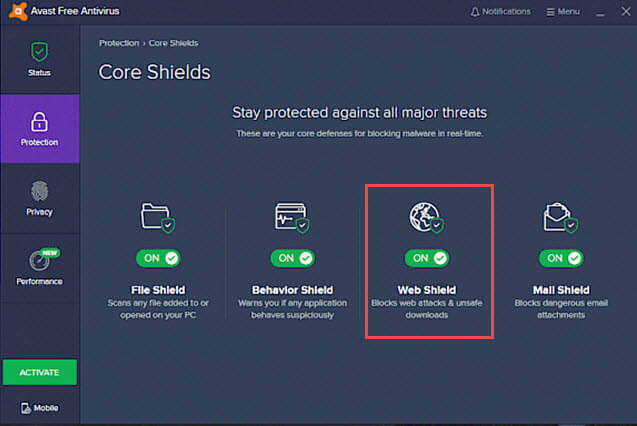

Such computer infections can be avoided by closely analysing each step of the free software download procedure to ensure that no additional applications are included. Additional applications presented are often described as 'legitimate and virus-free', however, they are likely to be adware or malware. Web Shield is often distributed via small programs called 'download managers' (also called 'download clients', 'installers', etc.) used by freeware download websites such as, , and .Īlthough download managers supposedly ease the download process, they simply offer installation of additional programs to monetize the freeware download websites' traffic and free services. You are strongly advised to eliminate Web Shield from your Internet browsers immediately. Web Shield is similar to other applications claiming to enable various useful features.įor example, Coupon Alert, Shopzy, iShopper, CorAdviser, and WebSmart App also claim to save time and money, however, these adware-type applications (including Web Shield) are developed solely to generate revenue by the display of intrusive online ads and sharing collected data with third parties. Tracking of personally identifiable information can lead to serious privacy issues or even identity theft. Types of recorded information include geographic location, IP addresses, unique identifier numbers, website URLs visited, pages viewed (and activity on those pages), browsing history, and so on. The main reason for these negative associations is a deceptive software marketing method called 'bundling' (stealth installation of third party applications together with regular software) employed to distribute the Web Shield extension.Īfter infiltration on Internet Explorer, Google Chrome, and Mozilla Firefox without users' consent, Web Shield generates intrusive online advertisements including text and in-text ads, banners, pop-ups, pop-unders, interstitial, and other ad types.Ĭlicked advertisements often redirect to bogus websites containing infectious content, thereby exposing your computer to risk of infection.Īnother important downside of this application is that it tracks various I nternet browsing-related information that may be personally identifiable. On initial inspection, some users may find this functionality legitimate and useful, however, be aware that Web Shield is classed as adware or a potentially unwanted program (PUP).

I cross-posted this with a post on the thread I started prior to seeing this one as I saw no other way around it.Irrational Number Applications (the developers of Web Shield) claim that their product allows users to observe who is tracking their personal information and to improve Internet browsing performance by disabling certain browser functions. Subsequently, after running into the problem, I was able to reconnect by the method described above (disabling and re-enabling avast!) with both Zone Alarm and Spybot S&D running alongside avast!. I stopped Zone Alarm to no avail, and then, when I stopped avast!, I was able to reestablish the connection. When I discovered that I could reconnect by stopping avast!, I was running only Zone Alarm and avast! (of the three programs). I had suspected Spybot and tested without loading it but got the same result.

ZoneAlarm is shown in the Security Center under Firewall (nothing else). I am also running Zone Alarm, and Spybot S&D.
Web shield should i remove it windows#
The Windows Vista Security Center shows only avast! running under Malware. The machine came with Norton Internet Security which I disabled using MSCONFIG (two entries), but I am uncertain if I have gotten rid of all of it. I am running the following providers (default):


 0 kommentar(er)
0 kommentar(er)
